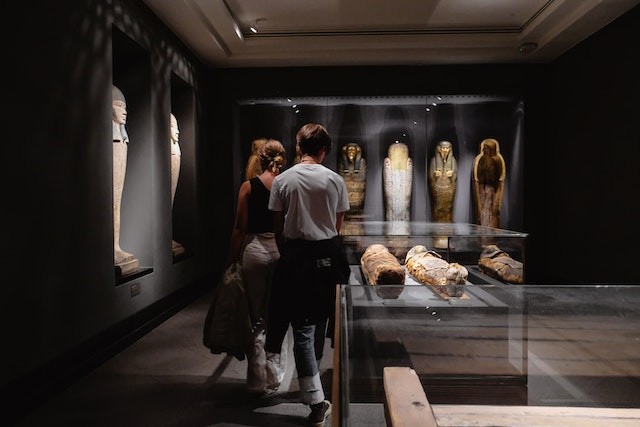
A preserved corpse that is on display in Mexico raises concern. Mexico's National Institute of Anthropology and History observed that at least one has fungal growth.
Mummy in Mexico May Pose Biohazards
The corpses that were unintentionally mummified were dug up from the 1860s onwards. Their families could no longer pay burial fees, so they were displayed at the Museo de las Momias in the state capital of Guanajuato. They had traveled before and were exhibited north of the border in the United States in 2009, Daily Mail reported.
The institute noted that many still have hair, leathery skin, and original clothing. However, at least one was observed with fungal growth.
It's unclear if the glass cases at the tourism fair are airtight. The experts are worried they are being exhibited without enough safeguards, posing the public at risk of biohazards.
According to ScienceDirect, biohazards are biological hazards that refer to natural substances that pose a threat to the health of living organisms, primarily humans.
The institute studied some of the published photos from the exhibit in November 2021 and noticed that at least one shows signs of a proliferation of possible fungus colonies. The experts advised studying them for signs of a risk to the cultural legacy, including those who handle them. However, they didn't elaborate on what type of fungal growth was observed.
The Museo de las Momias welcomes over 4,000 visitors a week. It charges tourists £2 to see over 100 mummies in the museum. All of which have been dug up from a cemetery next door.
They display murder victims, criminals buried alive, and infants laid to rest and dressed up as a saint. The locals reportedly believe that it will ease their passage to heaven.
How Are Mummies Naturally Preserved?
Natural mummification is when a deceased person's organs and skin are naturally preserved without chemicals. This process rarely happens.
The outlet noted that there are rumors that some corpses that were naturally mummified were either buried alive or died in a cholera outbreak. However, the claim has not been proven.
Another possible explanation was the local climate and mineral-rich environment where the mummies were buried. Some believed that they were mummified unintentionally due to the sealed crypts. However, no one knows for sure.
The federal institute has distanced itself from the decision to display the mummies, noting it had not been consulted about the exhibit.
Is Fungi Dangerous?
Common fungi present in the environment are the source of many fungal infections. Most of them are not toxic, but some can be dangerous to health, according to MedicalNewsToday.
There are two types of fungal infections: primary and opportunistic. Systemic infections are ones that spread throughout the body, while localized infections are those that only affect one location.
Opportunistic fungi infections profit from a compromised immune system. These are those with weakened immune systems, such as those who have AIDS or HIV, or other illnesses.
These infections tend to be quite aggressive and spread quickly to other organs. They may even be lethal at times.
RELATED ARTICLE : Are Mermaids Real? Experts Investigate Japan's Mummified Creature with Human Face and Fish Tail
Check out more news and information on Mummies in Science Times.
© 2025 ScienceTimes.com All rights reserved. Do not reproduce without permission. The window to the world of Science Times.










